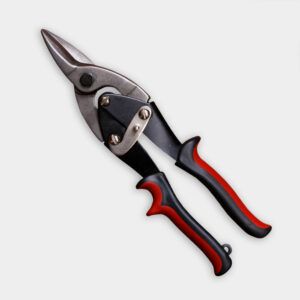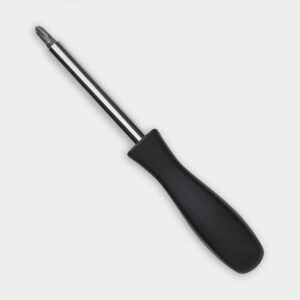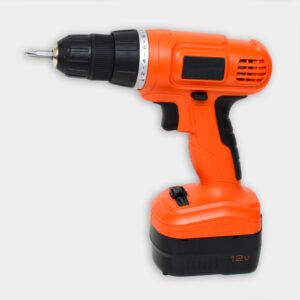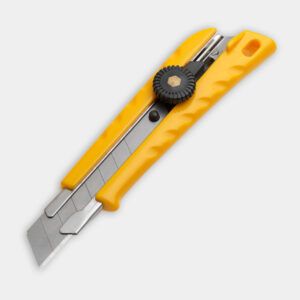We may be compensated if you purchase through links on our website. Our team is committed to delivering honest, objective, and independent reviews on home products and services.
Project details
Skill
Cost
Estimated Time
Creating zones in a forced-air HVAC system can improve your home’s comfort and energy efficiency. This approach allows you to control the temperature in different areas of your house independently, keeping each room at an ideal temperature setting. In this article, we’ll explore the process of zoning a forced-air HVAC system, including the benefits, installation steps, and key components involved. This Old House plumbing and heating expert Richard Trethewey shows how to install a zoned system in the video above.
Understanding Forced-Air HVAC Zoning
Zoning a forced-air HVAC system involves dividing your home into separate temperature-controlled areas. This allows you to set and maintain different temperatures in various parts of your house. By installing zoning, you can avoid over-conditioning areas that don’t need it to improve comfort and efficiency.
Benefits of Zoning Your HVAC System
Zoning your forced-air HVAC system offers several advantages:
- Cost savings: Reduce energy consumption and lower utility bills by targeting specific zones instead of the entire home.
- Energy efficiency: Heat or cool only the areas you’re using, reducing the workload on your HVAC system.
- Extended equipment life: Decrease wear and tear on your HVAC system, extending its life span and reducing the need for frequent repairs.
- Improved comfort: Customize temperatures for different areas of your home, ensuring that each room remains comfortable regardless of its use.
Can You Add Zones to an Existing HVAC System?
As the video shows, you can add zones to an existing forced-air HVAC system. While it’s easier to implement zoning during the initial installation, retrofitting an existing system is possible with the right approach and components.
Key Components of a Zoned Forced-Air System
A zoned forced-air HVAC system consists of essential components that work together to provide individualized temperature control throughout your home. Understanding these components will help you appreciate the intricacy and benefits of a zoned system.
Pneumatic Dampers
Pneumatic dampers are the most important element in a zoned forced-air system. These devices, which resemble deflated beach balls, are installed inside the ductwork near each register. When inflated, they seal off airflow to a particular zone. When deflated, they allow air to pass through. The ability to control air distribution precisely allows you to keep each zone at your desired temperature.
Air Tubing and Manifold
Air tubing connects the pneumatic dampers to a central manifold near the furnace. This network of tubes allows for the inflation and deflation of the pneumatic dampers to control airflow to different zones.
Air Pump and Control System
An electric air pump connected to the manifold provides the necessary pressure to inflate and deflate the pneumatic dampers. A control system, including smart controllers in each room and a main display panel, manages the entire zoning operation. These smart controllers allow for real-time adjustments and maintain each zone’s temperature.
Considerations for Zoning Your Forced-Air HVAC System
Before deciding to zone your forced-air HVAC system, consider the following factors:
- Home layout: The design and layout of your home can impact the effectiveness of zoning. Homes with open floor plans may not benefit as much as homes with closed-off rooms.
- Existing ductwork: The condition and configuration of your current ductwork may affect installation. Older or poorly designed ductwork might require additional modifications.
- Budget: Zoning systems can be a significant investment, with costs ranging from $1,500 to $8,500, according to Angi. Weigh the initial costs against the potential long-term savings and improved comfort.
- Professional installation: Due to the complexity of the system, we recommend using an HVAC contractor for installation. Skilled technicians ensure that the system is installed correctly and functions optimally.
Installing a Zoned Forced-Air HVAC System
Installing a zoned forced-air system involves several steps and requires an HVAC professional. Here’s an overview of the process to transform your HVAC system into a zoned powerhouse.
- Use snips to cut a hole in the side of the furnace duct and fasten a male fitting.
- Attach a flexible duct to the male fitting, which is connected to an electric suction fan.
- Remove the grilles from all the registers throughout the house.
- Plug up the duct openings—except one—with a foam rubber block placed inside a plastic trash bag.
- Turn on the suction fan to create negative pressure in the ductwork.
- Fashion a parachute from a plastic grocery bag and attach to it a spool of monofilament fishing line.
- Place the parachute into the one unplugged register. The negative pressure will suck the parachute and fishing line down to the furnace.
- Remove the flexible duct from the side of the furnace and pull out the parachute.
- Disconnect the parachute and attach the air tubing to the monofilament line.
- Go to the unplugged register and reel in the monofilament to pull the air tubing through the duct and into the register. Disconnect the monofilament.
- Unplug one of the other registers and use its foam rubber block to plug up the register that now has the air tubing in it.
- Repeat Steps 7 through 10 to pull a length of tubing from the furnace to every register throughout the house.
- At each register attach a pneumatic damper to the end of each length of tubing.
- Disconnect the suction fan, flexible duct and male fitting from the furnace. Seal the hole with a piece of sheet metal.
- Mount a manifold to the wall beside the furnace and then connect the ends air tubing ends to the ports on the manifold.
- Mount an electric air pump next to the manifold. Connect the air pump to the manifold with two clear plastic tubes.
- Remove all foam-rubber blocks from the registers and reinstall the grilles.
- In each room with a register, install a battery-powered sensor, which allows you to control the room temperature.
- Mount the main display panel to the wall in the kitchen or living room, which grants you control over the temperature in every room from one location.
Maintaining Your Zoned Forced-Air HVAC System
Regular maintenance is necessary for the best performance from your zoned forced-air HVAC system. Here are some key maintenance tasks:
- Regularly check and replace air filters: Clean filters maintain airflow and efficiency, preventing strain on the system.
- Inspect air tubing and pneumatic dampers for leaks or damage: Addressing any issues promptly prevents loss of efficiency and potential system failures.
- Keep smart controllers clean and replace batteries as needed: Functional controllers help you get accurate temperature monitoring and control.
- Schedule annual HVAC tune-ups: Regular check-ups by professionals keep your system running smoothly and allow them to address any potential problems before they escalate.
Learn More: How To Zone a Forced-Air Furnace and Air Conditioner




